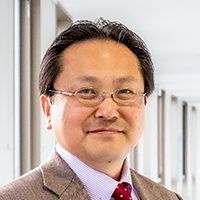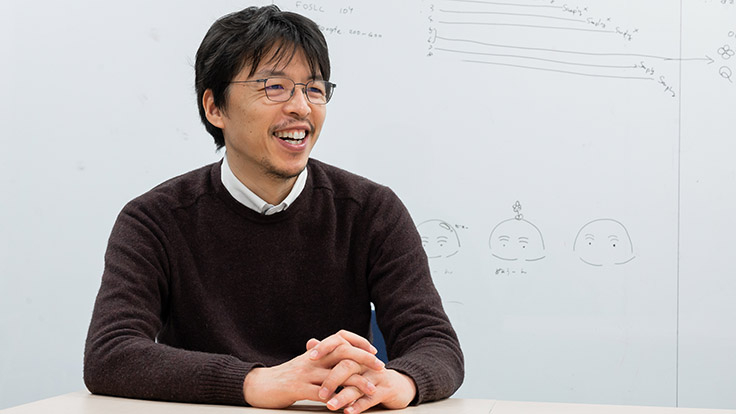Envisioning tomorrow’s robots today
with Prof. Ryo Kurazume
People have long imagined a world where robots replace humans in dangerous, dirty, and demanding jobs. But while such dreams often evoke images like those of the spectacular, amazingly skilled robots that grace the movie screen, the near future of intelligent robots that surpass the comparatively primitive ones currently used in factories may take a much different form.
“Super robots loaded with expensive sensors and processors sound fantastic, but the technological challenges and costs are huge,” says Ryo Kurazume, professor of Kyushu University’s Faculty of Information Science and Electrical Engineering.
“Instead, what if we place the sensors in the environment and have them send information to a robot or even a team of robots when needed? With the environment as a part of the system, even relatively simple robots could act just as intelligently as super robots.”

Kurazume and his group are combining cutting-edge technologies to accelerate the realization of intelligent service robots free of human traits such as fear, discomfort, and fatigue to do everything from assisting us in our daily lives and making construction sites safer to even training humans to provide better care for patients.
One way he hopes to achieve this is through the concept of an “informationally structured environment” in which sensors in the environment collect and organize information and share it with robots as needed on a real-time basis. By distributing tasks and reducing redundancy in sensors, individual service robots could not only work together better but also be more cost effective.
To coordinate the collection and handling of this massive amount of information, Kurazume’s team has been developing software called the Town Management System, which is publicly available for others to use and has been evolving for more than 15 years.
Moreover, the sensors do not have to be stationary. In one recent demonstration, Kurazume’s team used mobile, external sensors that actively explore and map an environment to help navigate a motorized wheelchair.
“Step by step, we are trying to make robots more intelligent so they better understand the situation around them and can make the right decisions with fragmented information,” explains Kurazume. “Eventually, we want to be able to communicate with them using conversation and gestures in the same way that we communicate with each other.”
Building on the software and hardware base that they have developed thus far, Kurazume and his group are continually seeking out new technologies and considering how to incorporate them to realize this vision.
For example, Kurazume’s lab was doing demonstrations with a high-speed 5G cellular network installed at Ito Campus before services rolled out across Japan, and they have been taking advantage of centimeter-precise positioning information made possible by Japan’s Quasi-Zenith Satellite System as they develop robots capable of giving tours.
Kurazume is also finding ways for robots to assist in jobs that require a human touch. His group has been developing systems that use augmented reality to help train people in Humanitude, a caregiving technique that emphasizes interaction and is promising for improving conditions for both dementia patients and their caregivers.
Utilizing tactile sensors on a life-size doll and smartglasses that can overlay a simulated patient’s face on the doll while also presenting other useful data, the system gives trainees real-time feedback on the application of Humanitude’s numerous techniques to not only make training more efficient but hopefully even enjoyable.
In the future, Kurazume sees development of robots moving more and more to businesses as robots becoming increasingly commonplace, but universities will always have a special place in the field.
“The role of universities is to discover new ways to combine the latest cutting-edge technologies from different fields and present to society the future ahead of time,” says Kurazume. “By staying at the forefront of development, we will create new visions of tomorrow.”



































